- Advice
- Camping Tips
- Camping With Dogs
Ultimate Guide to Camping with Dogs
Download your free dog camping checklist
Your dog no doubt loves to explore the great outdoors, and a camping trip is the perfect way for you and your four-legged friend to enjoy new sights, sounds, and scenery together.
To ensure a smooth and enjoyable adventure, it’s important to be well-prepared. This comprehensive guide covers everything you need to know, from pre-trip planning and a complete dog camping checklist to safety tips and more.
Skip to:
- Dog-friendly campsites
- Camping with a dog checklist and gear
- Pre-planning checks
- Top tips for camping with dogs
- Tent camping with dogs
Book a dog-friendly campsite

First things first, you’ll need to find a dog-friendly campsite that welcomes both you and your pup! Whether you're planning an adventure in the Scottish Highlands or a relaxing beach getaway in Cornwall, there are plenty of dog-friendly campsites across the UK to choose from.
Use filters to narrow down sites based on your specific needs. Some campsites offer dedicated dog-walking trails, perfect for letting your furry friend stretch their legs, while others include convenient features like dog-wash stations, ideal after a day of muddy fun or seaside splashing.
Camping with dogs: Gear checklist
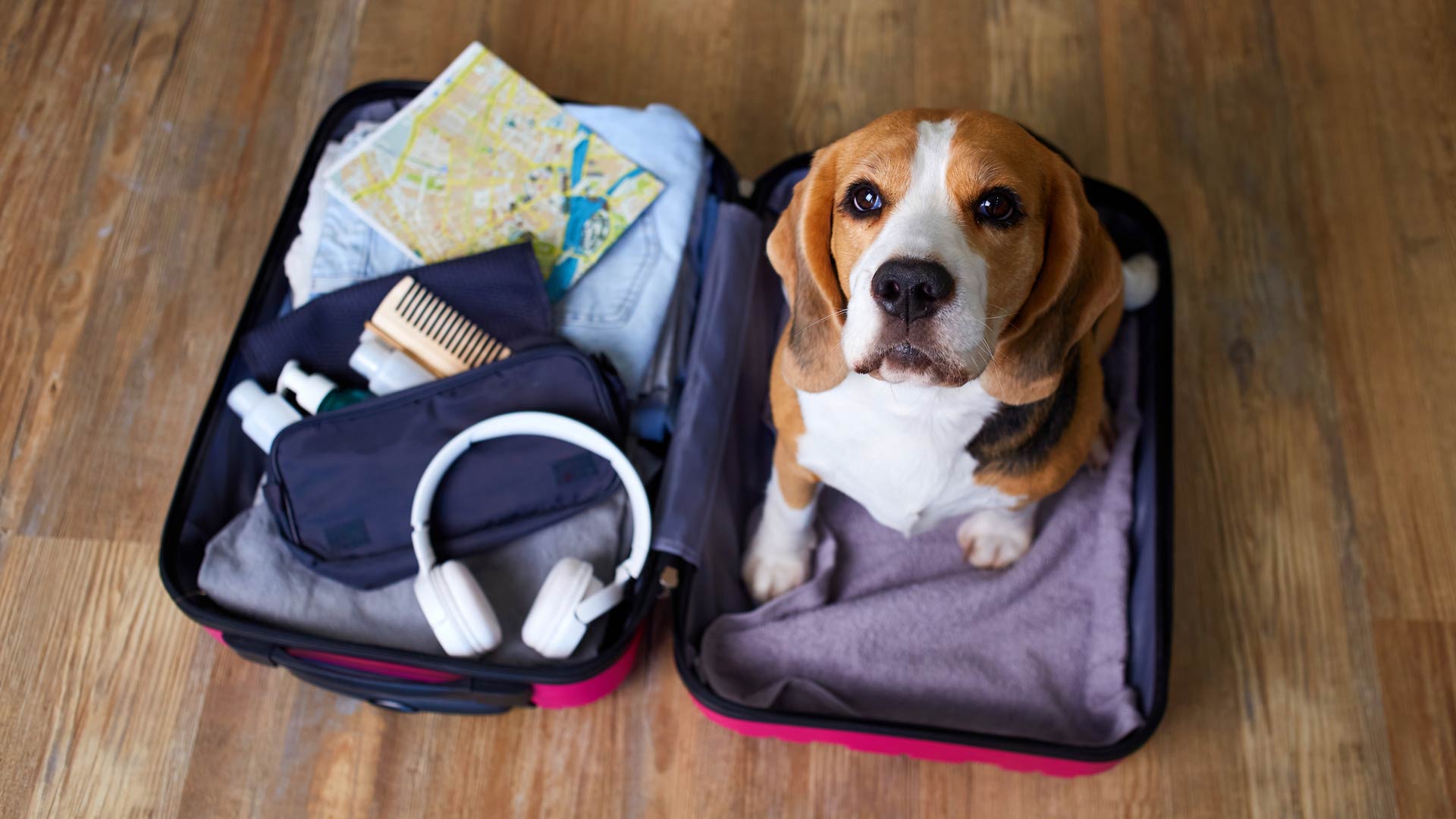
Make sure you pack everything your pup needs for a safe and enjoyable camping trip. From daily essentials to comfort items and safety gear. You can download our free dog camping checklist or view what you need below.
Food
It’s tempting to toss your dog food from the barbecue, but it’s not the best idea to change your dog’s eating habits; it could lead to a poorly pooch. Take your dog’s regular food on your camping trip and give them the odd treat here and there.
Water
Whether you're driving to the campsite, relaxing on-site, or exploring the area, always keep a bottle of water on hand. Staying hydrated is just as important for your dog as it is for you, especially on warm or active days.
Dog bowl
Food and water bowls are essential. If you plan to hike during your trip, bring a collapsible, lightweight, and easy-to-pack bowl. It makes giving your dog a drink on the go much simpler.
Poo bags
Bodily functions don’t come with a warning, so be prepared with plenty of poo bags. Dog fouling is both frowned upon and could land you with a fine. Dispose of waste responsibly to keep campsites clean and welcoming for everyone.
Wipes
You’ll be surprised how often dog wipes come in handy. Use them to clean muddy paws, wipe down fur, or deal with unexpected messes around the campsite.
Dog chew toy or blanket
As exciting as camping is, your dog may need some familiar comforts to feel fully at ease. A favourite chew toy or blanket from home can help them settle in more easily at bedtime or during quiet moments.
Dog bed
After a full day of outdoor adventure, your dog needs a cosy place to relax. Bring their regular bed if possible, or opt for a travel-friendly one paired with a familiar blanket to help them feel at home in your tent or camper.
Collar or harness
At our dog-friendly campsites, dogs must be kept on a lead at all times while on-site, so it’s essential to check that your dog’s collar or harness fits securely before you arrive. The excitement of new surroundings can make even a usually well-behaved dog pull or wriggle.
Short and extended dog lead
A short dog lead is good for keeping your pooch close by at all times. If you’re not a fan of your dog heading into unexplored territory alone, but you don’t want to stop them exploring, packing the extendable lead is worth it.
Please note: When camping on a Club Site, your lead must extend no longer than 2m.
Dog identification tags
By law, your dog must be microchipped, but ID tags on their collar are a simple and effective way to help reunite you quickly if they wander off. Make sure the tag includes your phone number and location so you can be easily contacted.
Tie-out stake
Camping with dogs can be non-stop action. When it’s time for a well-earned break, after a long walk or a game of fetch, you can keep your dog safely secured outside your tent, caravan, or motorhome with a tie-out stake.
Long-lasting treats
A long-lasting chew is the perfect distraction when you're busy. Whether you’re pitching a tent, cooking dinner, or enjoying a lazy morning lie-in, it’ll help keep your dog content and occupied.
Towels
Muddy paws, wet fur, and unexpected dips in streams are all part of the fun, so bring a dedicated set of towels just for your dog. Trust us, you’ll use them more than once.
Collar light
It’s important that both you and other campers can see your dog at all times, especially after dark. A collar light is a handy tool for evening walks and helps alert motorists driving around the campsite to your dog’s presence.
First-aid kit
Bring a pet-friendly first-aid kit and ensure it includes essentials like hydrogen peroxide, which is especially useful for cleaning cuts on paws and legs. It’s also a good idea to familiarise yourself with the nearest vet clinic before you arrive.
GPS tracking device
Attach a GPS tracker to your dog’s collar to keep tabs on their location during walks and hikes. Many devices also let you monitor your dog’s activity levels, ideal for adventurous pups who love to roam.
Paw protectors
If you're planning a challenging hike and your dog will be joining you, pack paw protectors to help them navigate rough or rocky terrain. They can also be useful for protecting your dog’s paws from hot surfaces on warm days.
Tick remover
Use your flea and tick preventative before leaving for your camping trip. However, just in case you do spot a tick, make sure you have a remover on hand to deal with it swiftly.
Car harness
Keep your dog safe while travelling with a harness or a car seat suitable for their size.
Cooling vest or bandana
If you’re camping with your dog in the heat, it’s definitely worth packing a cooling vest or bandana to help regulate their body temperature. A great tip is to soak the vest or bandana in water, allowing it to evaporate as it cools your dog down.
Portable fan/ heater
Depending on the time of year you’re camping with your dog, you can keep your unit warm or cool with a portable fan or heater. Just make sure the heater is pet-safe and used with proper ventilation in enclosed spaces. For more information, check out our guide on camping heaters.
Doggy sunscreen
This is particularly important for dogs with short or light-colored fur. You’ll need to protect exposed skin areas, such as the nose, ears, and belly. DO NOT use human sunscreen on dogs, as it may contain zinc oxide or other toxic ingredients.
Waterproof jacket or jumper
You may be able to skip this one if your dog has a lot of fur, but for smaller dogs who tend to get cold more quickly, a waterproof jacket or jumper can keep them snug on those winter walks by the campsite.
Heated pad
This is a must for tent campers, as your dog could get cold during the night. An electric heated pad placed in your dog’s bed is great for keeping your pooch warm throughout the night. Make sure you select a heating pad with safety features, such as auto shut-off and waterproofing.
Advice for camping with dogs in the heat
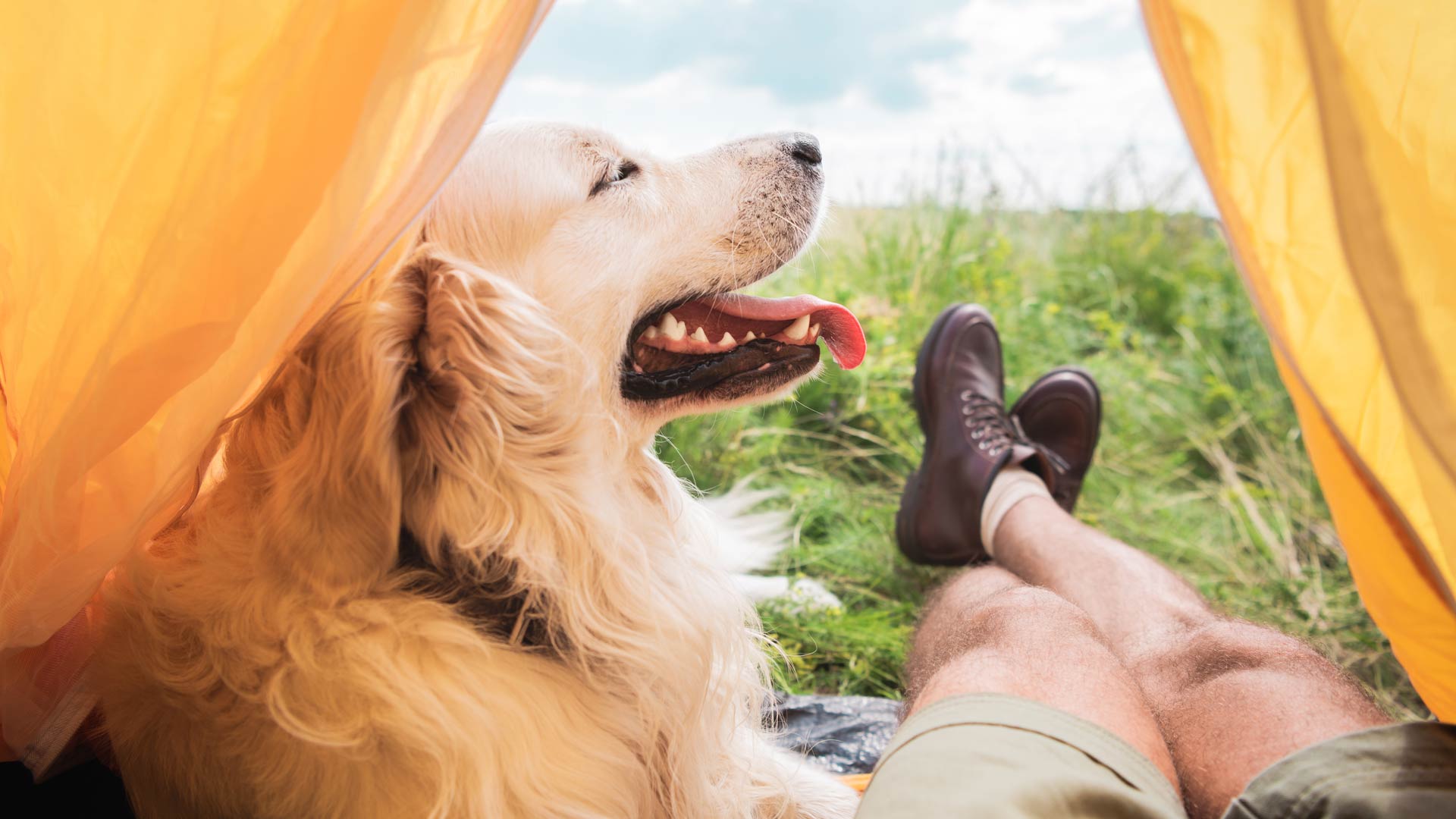
If you're camping with your dog during one of Britain's heatwaves, check out these handy tips to keep your pooch safe.
1. Carry extra water
Always have plenty of fresh water available for your dog, especially on long walks or hot days. Hydration is key to avoiding heatstroke.
2. Protect their paws
Hot sand, pavements, or rocky paths can cause burns to sensitive paws. Use dog booties for full protection or apply paw wax to create a temporary barrier. Just be sure to reapply the paw wax if your dog is splashing around in water.
3. Search for shade or bring the shade with you
Choose shaded areas at your campsite, or bring your own shade with an awning, parasol, or dog-friendly tent. This helps your dog rest safely out of the sun, especially during the hottest part of the day.
4. Stock up on frozen treats or ice cubes
Just like us, dogs love a refreshing cool-down. Freeze dog-safe treats or bring ice cubes in your cooler to keep your pooch hydrated and cool throughout the day.
5. Avoid midday activities
Plan walks and playtime for early morning or late evening when temperatures are lower. Avoid peak heat hours to reduce the risk of overheating or sunburn.
Advice for camping with dogs in the cold
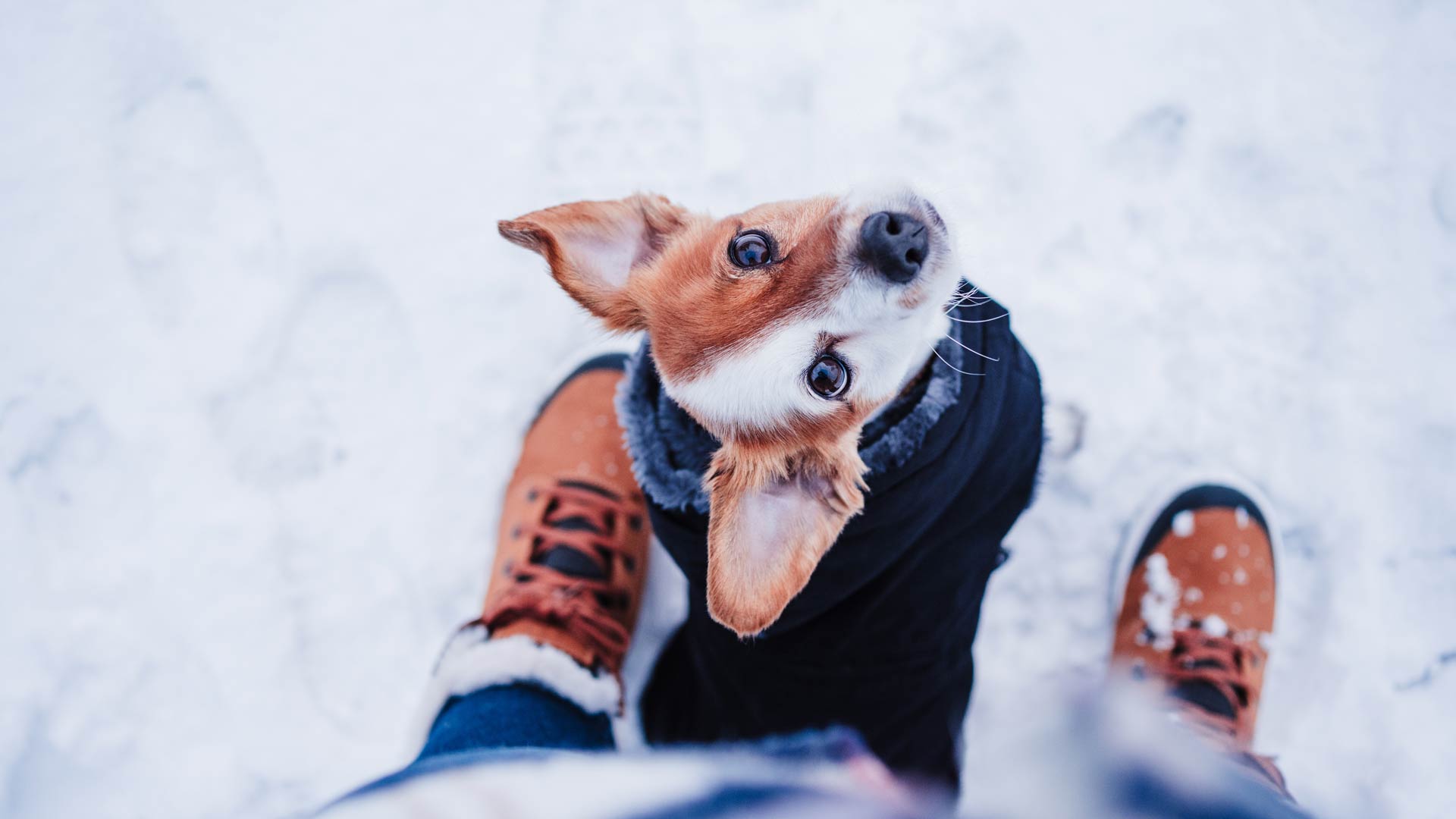
Unlike a British heatwave, which comes and goes quickly, cold weather tends to linger. Make sure you're well prepared for dropping temperatures with these helpful hacks.
1. Pack extra blankets
Thermal blankets are essential, especially after your dog has been out in the rain or has been washed. Extra layers will help them dry off and stay warm.
2. Insulate the ground
Cold rises from the ground, so it’s essential to insulate the area where your dog sleeps. A layer of tarpaulin topped with a thick mat or carpet tile can make a big difference.
3. Bring a raised dog bed
Elevating your dog’s bed keeps them off the cold ground and helps retain body heat.
4. Use a waterproof outer layer
Even if your dog has a thick coat, a waterproof jacket can keep them dry and reduce chill from wind or rain.
5. Feed them a little more
Dogs burn more calories staying warm in cold weather. A slightly larger portion (if your vet approves) can help them maintain energy and body heat.
6. Keep their paws dry and checked
Snow, ice, and mud can get stuck in paws and cause irritation. Dry their feet thoroughly and check for cracks or debris.
Checks to do before camping with your dog
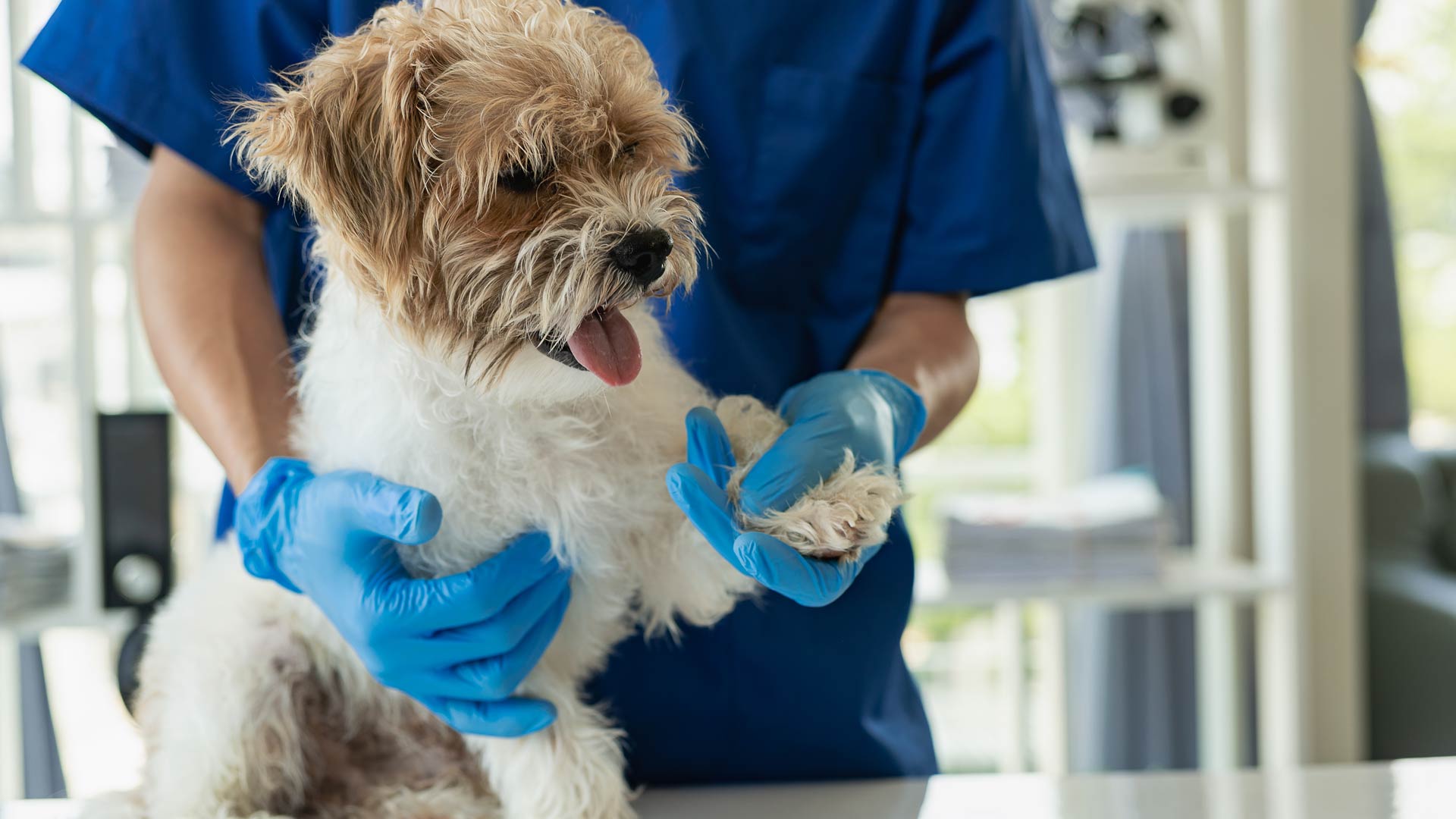
Before you whizz off on your camping adventure with your dog, it's worth doing a few checks to make sure you both have a fun and stress-free time.
Vet check and vaccinations
Book a visit to the vet before your trip to ensure your dog is fit and healthy for outdoor adventures. Make sure their vaccinations, flea, and tick treatments are up to date, especially if you'll be hiking or in rural areas. It’s also a good idea to ask your veterinarian about any region-specific risks, such as local parasites or toxic plants in your area.
Training and behaviour readiness
Your dog doesn’t need to be perfectly obedient, but basic commands like “stay,” “leave it,” “come,” and “heel” are essential for a safe camping experience. Test their recall in open spaces, and practise leash walking if you'll be using leads or tie-outs at the campsite.
Trial runs at home
Before a big camping trip, try a night or two in a tent in the back garden. This helps your dog become accustomed to new routines, sleeping arrangements, and unfamiliar outdoor noises in a low-stress environment. It's also worth starting with small holidays, such as a one or two-day getaway, and then building up to a longer camping adventure.
Keeping your dog calm on travel days
If your dog isn’t used to long car journeys, build up their tolerance with shorter drives first. Use a car harness, crate, or carrier for safety, and pack familiar items, such as a blanket or toy. Allow for regular stops, and avoid feeding them just before travel to prevent motion sickness.
Find a nearby vet
Once you’ve booked your campsite, take a few minutes to look up the nearest veterinary clinic. Save their contact details and location on your phone or print them out just in case you’re in an area with poor signal. Knowing where to go in an emergency gives you peace of mind and could save precious time if your dog needs help.
Top tips for camping with dogs
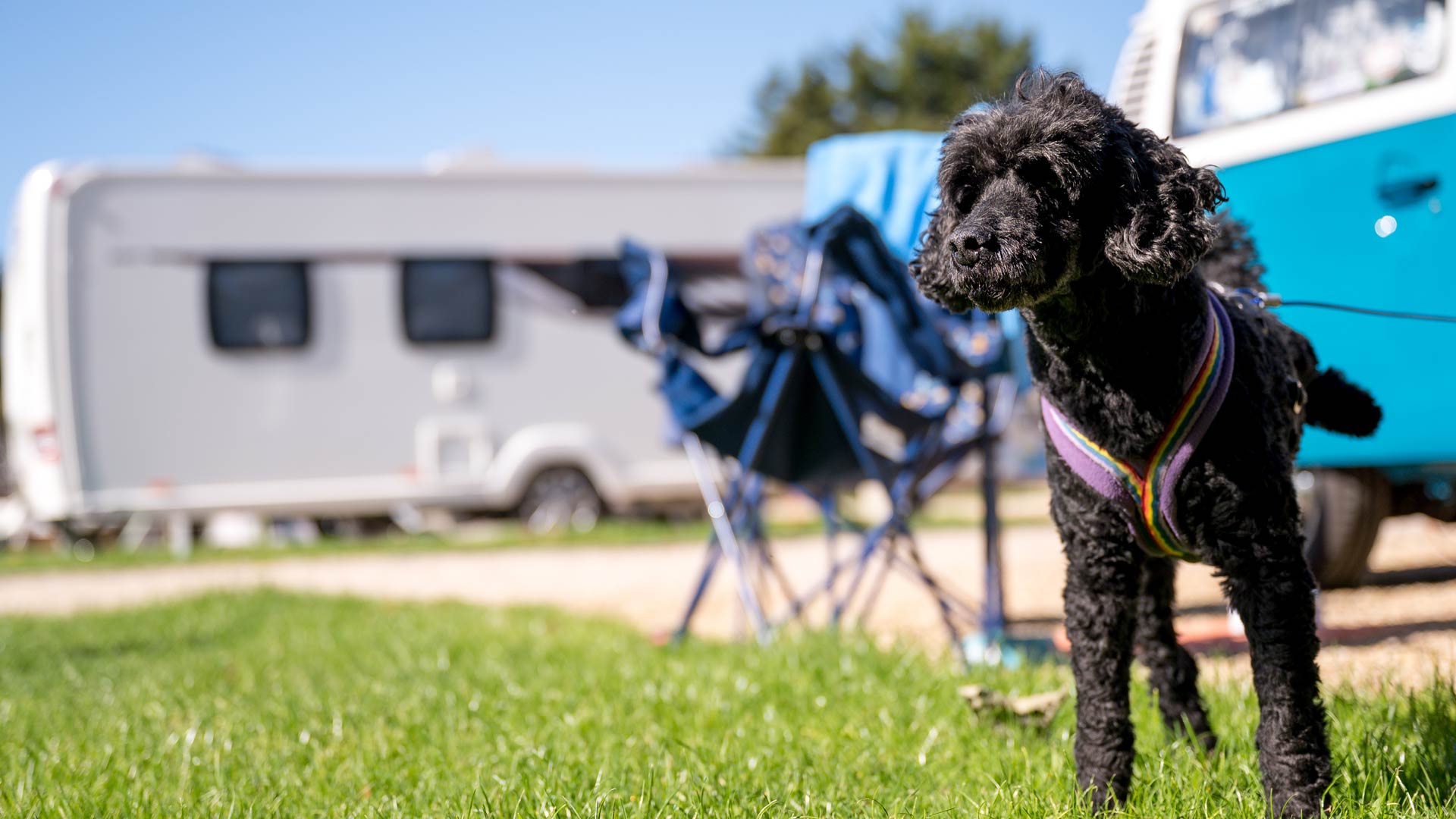
Keep your dog secure on-site at all times
It's important to use a lead, harness, or tie-out to prevent your dog from wandering into other campers’ spaces or nearby hazards.
Watch for wildlife, insects, and toxic plants
Protect your pooch by being mindful of potential harmful plants and animals.
Never leave your dog unattended
Even the calmest dogs can become anxious, overheat, or get into mischief when left alone. Always take them with you or have someone keep an eye on them. Please remember that although we have wonderful dog-friendly campsites, some campers may not feel comfortable with your dog wandering around unattended.
Stick to routines for food, play, and sleep
Keeping mealtimes, walks, and bedtime consistent helps your dog feel comfortable and settled in new surroundings.
Dispose of dog poo properly
Bring plenty of poo bags and always clean up after your dog. Campsites, as well as nearby attractions, have a ‘leave no trace’ rule, meaning to leave the location as you found it, clean and ready for the next person to enjoy.
Carry an image of your dog for identification purposes
Having a recent photo makes it easier to describe your dog and get help if they go missing during your trip.
Tent camping with dogs
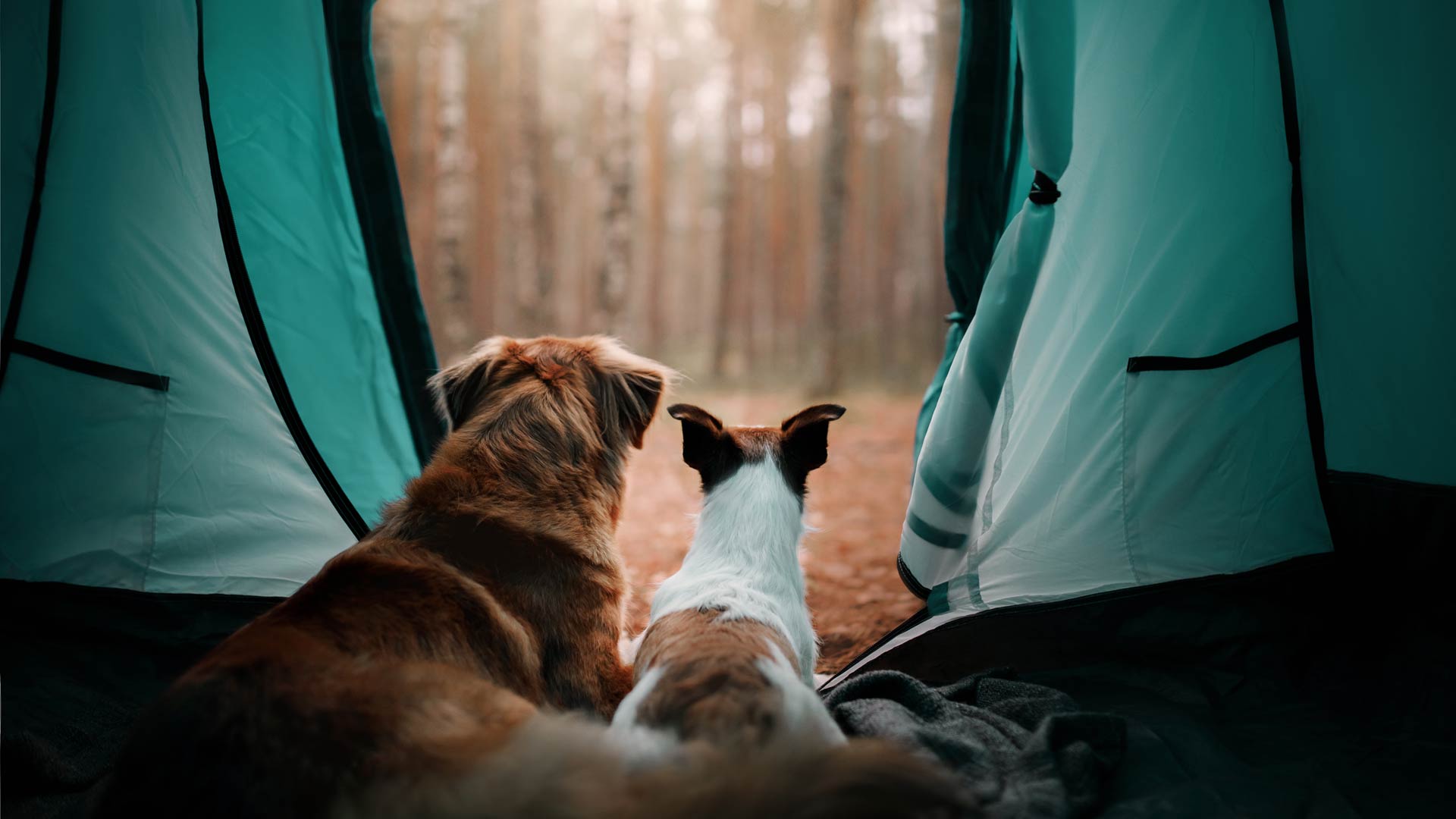
How to get your dog used to the tent
If you have the space, whether it's inside or outside the house, set up a tent and let your dog explore it. Reward calm behaviour so they associate the space with comfort and safety. If you have the garden space, it's worth pitching it there first, so they can also get used to outdoor noise.
Should your dog sleep inside or outside your tent?
If you’re staying at one of our campsites, you must keep your dog inside the tent. This is for their safety, as well as the safety of other campers. Whilst they are outside, they must be supervised.
What to do if your dog barks or gets anxious in the tent
Bring familiar bedding or toys and stick to your usual nighttime routine. A calming chew or soft music may also help reduce stress.
Handling dog waste while tent camping
This is where poo bags and wipes come in use. Make sure you pack plenty, pick up after your dog and dispose of the waste correctly. Do not bury any dog waste. If you are unable to find a suitable place to dispose of waste while out exploring, put it in a sealable container and dispose of it later.
Are you planning a camping trip with your dog? Check out our dog friendly campsites and tag us in your adventure on Instagram or Facebook.